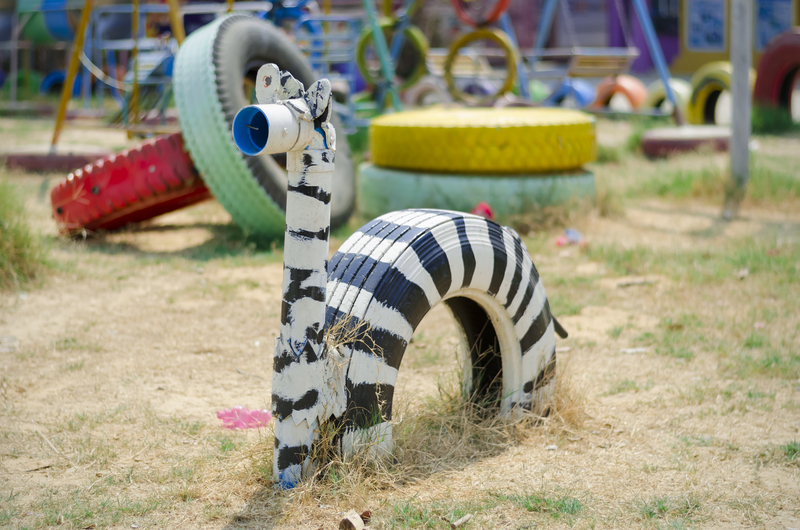Introduction to Community Approaches for Effective PPE Waste Management
The global outbreak of COVID-19 has highlighted the critical importance of Personal Protective Equipment (PPE) in safeguarding public health. However, the increased reliance on PPE such as masks, gloves, gowns, and face shields has led to a parallel surge in PPE waste. This sharp increase presents a serious challenge to proper solid waste management systems--especially at the community level. As improper disposal of PPE waste can have dire health and environmental repercussions, it becomes crucial for communities to implement effective PPE waste management approaches. This article delves into innovative, community-driven strategies for handling PPE waste, offering comprehensive insights and practical solutions for sustainable outcomes.

The Importance of Effective PPE Waste Disposal
The improper disposal of PPE hardens the global battle against pollution, as many protective items are made from non-biodegradable plastics. When not managed appropriately, these items can:
- Contribute to land and water pollution, harming wildlife and aquatic ecosystems
- Serve as potential transmission sources for pathogens if contaminated PPE is discarded carelessly
- Clog drainage and sewage systems, leading to flooding and sanitary issues
- Increase landfill burden, exacerbating the global waste management crisis
Challenges in PPE Waste Management at the Community Level
While the need for proper PPE disposal is clear, communities often face unique challenges, including:
- Lack of public awareness about the health and environmental hazards posed by used PPE
- Insufficient facilities and infrastructure for segregating and treating PPE waste
- Limited resources and funding dedicated to waste management programs
- Absence of standardized guidelines for safe collection, transportation, and disposal of PPE waste
Key Community Approaches for Effective PPE Waste Management
1. Raising Public Awareness
One of the cornerstones of successful PPE waste handling is community education. People must understand the risks associated with PPE litter and recognize their role in proper disposal. Strategies for raising awareness include:
- Distributing informational leaflets and posters in strategic locations
- Using local media, including radio and social media platforms, to spread messages about proper PPE discarding
- Organizing community talks and workshops in schools, marketplaces, and public gatherings
- Partnering with healthcare professionals and local leaders to emphasize safe practices
2. Establishing Designated Collection Points
To prevent the spread of contaminants and reduce environmental hazards, various communities have started setting up specialized PPE collection points. These include:
- Providing labeled bins for PPE disposal at high-traffic areas like hospitals, clinics, shopping centers, and transportation hubs
- Implementing closed-lid and foot-operated bins to eliminate direct contact
- Separating PPE waste from general household or municipal waste streams to avoid contamination
3. Segregation and Safe Storage Practices
Segregation at the source is a pivotal step in the management process. Communities should be equipped and encouraged to:
- Use color-coded bins or bags (e.g., red for COVID-19-related or infectious PPE)
- Clearly label PPE waste containers for easy identification
- Store PPE waste in secure, ventilated areas until transported for treatment or disposal
4. Organizing Community Clean-Up Drives
Regular, organized collection and clean-up initiatives foster a sense of ownership among residents. By involving community members in PPE waste clean-up activities, municipalities can:
- Promote solidarity and collective responsibility for hygiene and safety
- Reduce visible PPE litter in streets, parks, and waterways
- Provide immediate mitigation of environmental impacts
- Collect data and monitor PPE waste trends for reporting and planning
5. Training Waste Handlers and Volunteers
Waste workers and volunteers must follow stringent guidelines when handling potentially contaminated PPE waste. Communities can facilitate this by:
- Providing training sessions on correct PPE collection, handling, and personal hygiene protocols
- Ensuring the continuous supply of protective gear (gloves, masks, uniforms) for frontline waste handlers
- Equipping staff with handwashing stations and sanitizers
- Regular health checks and psychological support for workers engaged in high-risk environments
6. Community-Led Recycling and Upcycling Initiatives
While recycling traditional PPE is complex due to contamination risks, innovative solutions are emerging. Communities can explore:
- Collaborating with local recycling facilities equipped to handle PPE-derived plastics
- Supporting pilot projects that convert single-use masks into road surfacing materials or construction bricks
- Researching and investing in technologies that sterilize and repurpose PPE waste safely
- Promoting upcycling of certain PPE items (where appropriate and safe) into art, fashion, or practical household items
7. Promoting the Use of Reusable and Biodegradable PPE
Communities have a vital part to play in encouraging the adoption of sustainable PPE alternatives. Possible strategies include:
- Educating the public on the safety, maintenance, and environmental benefits of reusable masks and gowns
- Collaborating with local manufacturers to source or produce biodegradable PPE products
- Providing subsidies, grants, or incentives for residents and businesses that shift to greener alternatives
8. Formulating Localized PPE Waste Policies and Guidelines
Community-driven policy-making bridges the gap between national regulations and ground realities. Examples of effective actions include:
- Developing practical, easy-to-follow PPE waste disposal guidelines for households and businesses
- Enforcing penalties or fines against indiscriminate PPE dumping
- Encouraging public reporting of violations via hotlines or apps
- Integrating PPE waste management into disaster preparedness and health policy frameworks
Role of Partnerships in Community PPE Waste Management
Effective PPE waste management initiatives often thrive on strong partnerships. Successful community approaches can involve:
- Non-Governmental Organizations (NGOs): Offering technical expertise, funding, and capacity-building
- Healthcare Providers: Advising on infectious waste segregation and facilitating public education
- Local Governments: Ensuring policy support, regulations, and infrastructure development
- Educational Institutions: Conducting research and integrating PPE waste management into curricula
- Private Sector: Innovating safe disposal or recycling solutions and supporting community programs
Case Studies: Successful Community-Led PPE Waste Management Initiatives
Mumbai's "Blue Bin" Project
In Mumbai, India, local NGOs spearheaded a "Blue Bin" initiative by placing dedicated bins for PPE waste in slum communities and near hospitals. With active community participation and support from municipal workers, these segregated collections helped prevent contamination of general waste and ensured safer handling for both citizens and sanitation workers.
Eco Mask Project in Kenya
Nairobi's slum dwellers faced massive PPE waste during the peak of the pandemic. Local youth groups launched the "Eco Mask Project," collecting single-use masks and collaborating with universities to develop low-cost sterilization and plastic recycling methods. These efforts not only reduced pollution but also generated livelihoods by creating recycled products.
Public-Private Partnership in Italy
Italian municipalities teamed up with private recycling firms to convert used face masks and visors into construction materials. Local awareness campaigns ensured proper segregation at the source, allowing efficient collection and processing.
Best Practices for Sustainable PPE Waste Management in Communities
To achieve lasting success in PPE waste disposal and reduction, communities should adopt the following best practices:
- Continuous education and engagement--Maintain public interest and involvement through regular workshops, contests, and feedback mechanisms
- Data-driven planning--Track PPE waste quantities to adjust collection schedules and resource allocation
- Transparency and accountability--Publish annual or quarterly reports on PPE waste handling, encouraging public scrutiny and participation
- Monitoring and innovation--Stay updated with new technologies or approaches in PPE recycling, sterilization, and landfill diversion
- Feedback loops--Regularly consult and incorporate feedback from residents, volunteers, and workers to refine relevant strategies

Future Directions: Scaling Community PPE Waste Solutions
Looking ahead, sustainable management of PPE waste at the community level will depend on:
- Increased funding and investment in waste infrastructure
- Widespread adoption of biodegradable and reusable PPE
- Standardization of best practices and protocols
- Ongoing research and pilot projects to close knowledge gaps
- Legislative support to reinforce responsible waste handling
Conclusion
The challenge of managing PPE waste is far from over, but community-driven strategies offer hope for a cleaner, safer, and more resilient environment. By embracing innovative, participatory, and sustainable approaches, local communities can effectively reduce the risks associated with PPE disposal, protect environmental resources, and strengthen public health systems. As global awareness grows, the importance of community-driven PPE waste management will only increase, highlighting a fundamental truth: effective change always starts at home.
Frequently Asked Questions (FAQs) about Community PPE Waste Management
-
What types of PPE waste require special handling at the community level?
Items like disposable masks, gloves, face shields, gowns, and shoe covers--all potentially contaminated--should be handled with care and separated from regular waste. -
How can individuals participate in community PPE waste management efforts?
By following community guidelines, using designated bins, volunteering for local clean-ups, and spreading awareness among peers. -
Is it possible to recycle used PPE?
While conventional PPE is difficult to recycle due to its composition and contamination risk, specialized facilities and new technologies are being developed to address this. -
Are reusable PPE products safe?
When properly maintained, laundered, and disinfected, reusable masks and gowns offer a safe and eco-friendly alternative to disposables.
In conclusion, community approaches for effective PPE waste management not only address immediate disposal concerns but also pave the way for a healthier, more sustainable future for all.
